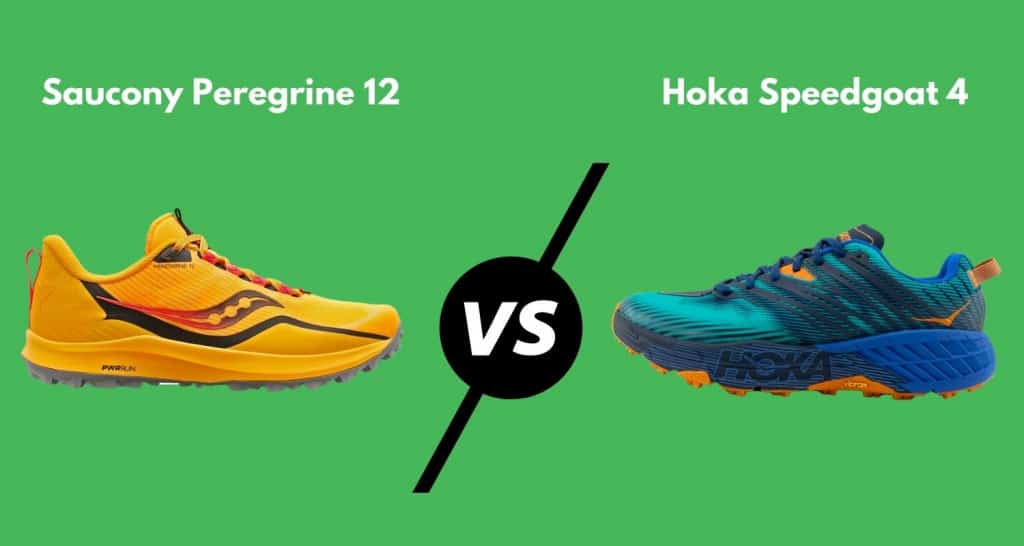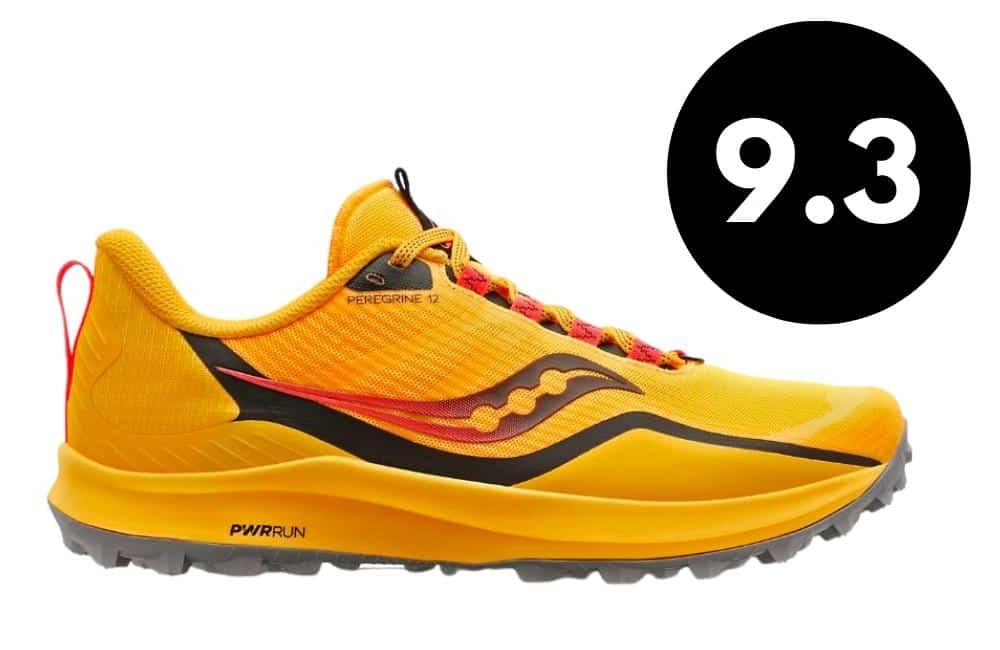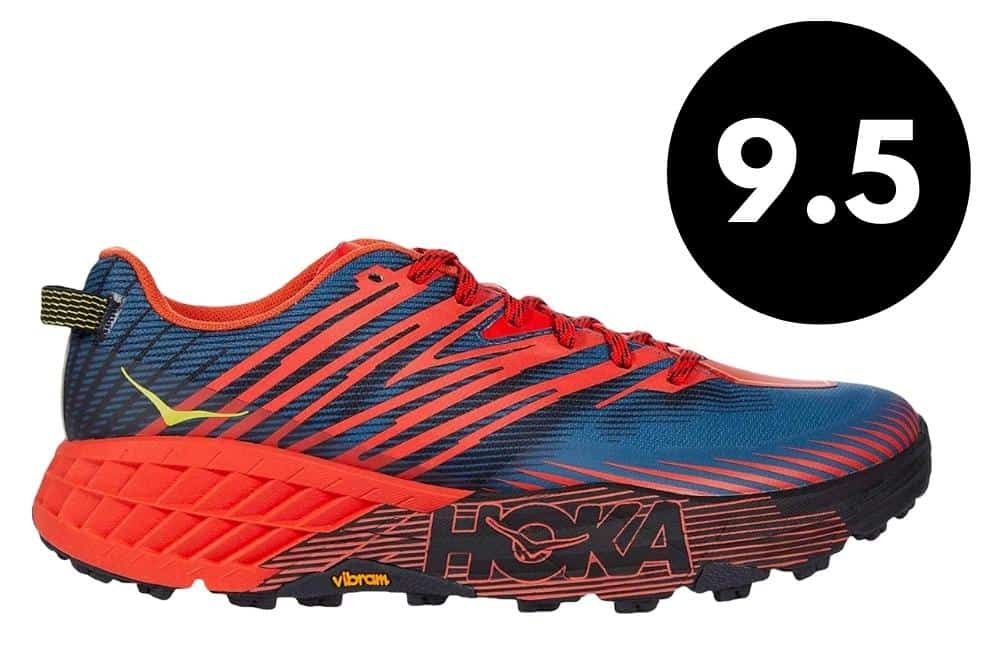Saucony Peregrine 12 vs. Hoka Speedgoat 4 (2022)
Are you hesitating between the Saucony Peregrine and the Hoka Speedgoat? Not a bad pre-selection! Fortunately, it’s easy to decide because these two shoes have different approaches to trail running.
Let’s start with one of the important points where they are equal: the grip. The shoes have aggressive 5 mm deep lugs to provide excellent grip on the most technical surfaces like mud and even snow. The SG, however, uses Vibram MegaGrip technology, which has an excellent reputation for both trail and hiking. The Peregrine, on the other hand, features the technology developed by Saucony: PWRTRAC. In practice, the difference is difficult to assess but trailers who are used to Vibram might prefer the Speedgoat for this reason.
Let’s move on to the cushioning. This is where the most noticeable difference between these two shoes lies. The Saucony Peregrine has a moderate stack (27 mm in the heel) with a firm feel, while the Hoka Speedgoat offers a softer (while still overall firm) and more generous cushioning with a 32 mm heel stack height. Both shoes have a low drop of 4 mm.
This difference in the sole is reflected in the weight: the Peregrine is lighter with 1.2 oz/34 g less, which is noticeable!
The above point is important as the foot support and the level of protection are equivalent. Nevertheless, the SG is a little more comfortable thanks to a more padded upper and a wider fit (the P12 is a little narrow in the midfoot).
Peregrine vs. Speedgoat : which one to choose?
With its firmer, barer cushioning, the Saucony Peregrine 12 is more for short to medium distances at a fairly fast pace (its lightweight design is a joy to go full speed!).
The Hoka Speedgoat, on the other hand, is comfortable for all distances, including ultra races.
Either way, rest assured, these two great trail running shoes can handle anything you throw at them with their flawless performance in terms of grip, lockdown, and protection.
Side-by-side comparison
Even more responsive ride
Good shock absorption
Effective foot protection
Flawless grip
Stiff heel collar can be a hindrance
Firm cushioning may not be suitable for everyone for long distances
Excellent grip
Maximum cushioning and responsive at the same time
New upper with a broader toe area
Robust, durable design
Versatile: even though the SG4 excels above all on rugged terrain, it will also be suitable for small dirt roads with no particular technical skills.
Saucony Peregrine 12
Hoka Speedgoat 4
Technical Specs
| Terrain | Trail | Trail |
| Pronation type | Neutral | Neutral |
| Drop | 4 mm | 4 mm |
| Heel stack height | 27 mm | 32 mm |
| Forefoot stack height | 23 mm | 28 mm |
| Lugs | 5 mm | |
| Weight (men) | 272 g/9.6 oz | 307 g/10.8 oz |
| Weight (women) | 237 g/8.35 oz | 261 g/9.2 oz |
| Features | Gaiter attachment point, Rock plate | Available in GTX, Toe cap |
| Fit | Wide feet | |
| Release year | 2022 | 2019 |
| Athletes | Karl Metzer |
Technologies
| Outsole | PWRTRAC | Vibram Megagrip Hi-Traction, 5 mm lugs, flex grooves |
| Midsole | PWRRUN | Injection-molded EVA foam, Balanced Stage Meta-Rocker Geometry |
| Upper | Engineered mesh | Engineered mesh, overlays, structural cage, reinforced toe cap |
Cushioning
| Softness (1-5) | 2 – Firm | |
| Bounce (1-5) | 4 – Bouncy |
Use
| Speed | Moderate, fast | All |
| Distance | Short, mid | Mid, long, 10k, half marathon, marathon, ultramarathon |
| Workout | Competition, daily runs | Daily runs, recovery, speed |



